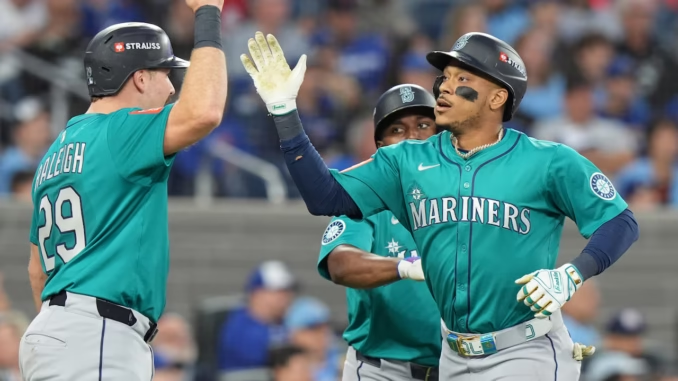
The Seattle Mariners kicked off the offseason with a major splash, becoming the first club to finalize a truly noteworthy transaction. Their headline move was locking down first baseman Josh Naylor with a sizable five-year agreement worth $92.5 million. By securing Naylor for the long run, Seattle addressed one of its most pressing areas of need and eliminated a key question that had hovered over their roster since the end of the 2025 campaign.
Naylor’s return to the Pacific Northwest ensures stability at first base for half a decade, giving the Mariners a reliable middle-of-the-order presence who is already familiar with the team’s culture, system, and expectations.

His performance after arriving during the 2025 season made him one of the most important bats in Seattle’s lineup, and the front office clearly viewed him as an essential piece of the franchise’s foundation moving forward. Bringing him back was not just a matter of filling a positional vacancy—it was about reinforcing continuity and signaling that the club intends to build a contender around a player they consider a core asset.
But Naylor’s contract has implications that extend beyond the immediate upgrade at first base. According to reporting from Ken Rosenthal and Will Sammon of The Athletic, the ripple effects of this deal could strongly influence Seattle’s pursuit of one of the most coveted international free agents on the market: Japanese slugger Munetaka Murakami.
Before Naylor’s signing, there had been widespread speculation that the Mariners would aggressively chase Murakami, whose immense power and offensive upside have made him a prominent target for several MLB teams. Seattle, known for its long-standing interest in top-tier Japanese talent, appeared to be among the most logical fits.
However, the landscape looks different now that Naylor is locked into first base for the foreseeable future. Murakami is capable of playing both corner infield spots, but his most natural path to everyday at-bats in MLB is at first base or designated hitter.
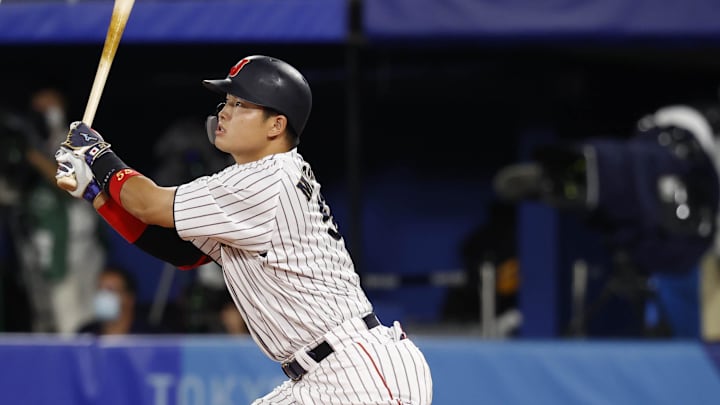
By committing major payroll resources and a multi-year role to Naylor, Seattle may have effectively closed off one of those avenues for Murakami. Rosenthal and Sammon suggest that this reduces the likelihood of the Mariners making an aggressive push for the Japanese star, as it no longer makes as much sense from a roster-construction standpoint.
This doesn’t necessarily remove the Mariners from all conversations regarding Murakami, but it does significantly alter the dynamics of any potential pursuit. With Naylor now cemented as the long-term solution at first, Seattle’s priorities may shift toward other needs—whether that’s adding another outfield bat, improving their pitching depth, or seeking upgrades in the infield that don’t overlap with Naylor’s role.
In short, by finalizing their first major decision of the offseason, the Mariners may have simultaneously reshaped the rest of their strategy. Naylor’s return is a clear win for Seattle, yet it also creates new questions about how the club will navigate the remaining months of free agency and whether Murakami still fits into their updated blueprint.
How Mariners’ chances of signing Munetaka Murakami shifted after Josh Naylor’s signing
With Eugenio Suárez officially on the open market again, the Seattle Mariners find themselves reassessing their options at the corner infield positions. As Ken Rosenthal and Will Sammon of The Athletic point out, the team’s recent financial commitment to Josh Naylor makes a splashy pursuit of a marquee free agent such as Japanese star Munetaka Murakami far less realistic.
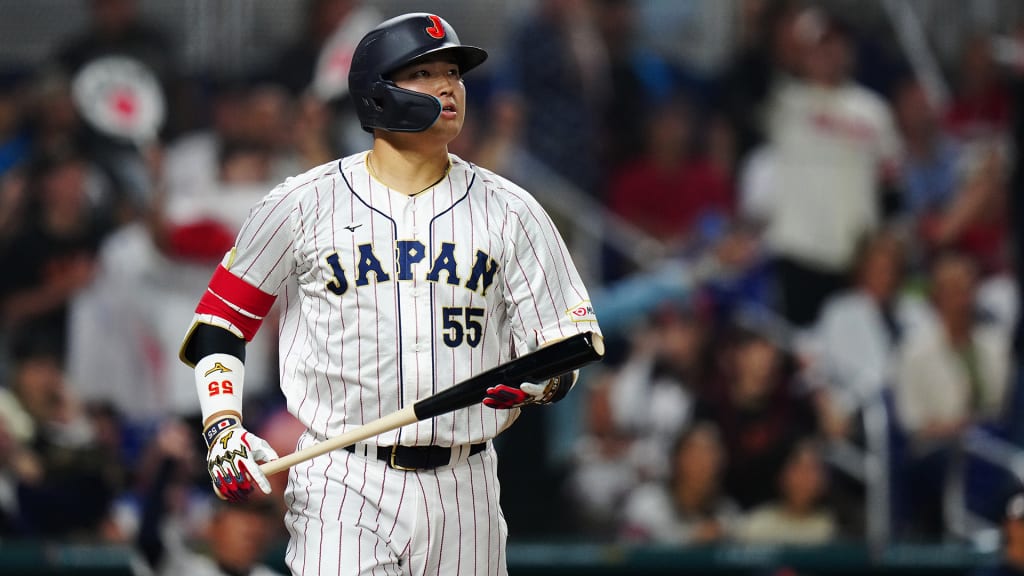
Seattle’s investment in Naylor, combined with the rapid ascent of top prospect Colt Emerson—who just turned 20 and is expected to be a major part of the club’s future—suggests that the Mariners’ corner infield needs may already be accounted for internally. Rosenthal and Sammon explain that with these factors in mind, Murakami becomes an unlikely fit, even if the Mariners had maintained early offseason interest.
Coming into this offseason, Seattle had two glaring areas to address: first base and third base. Both positions were in flux, especially since Naylor and Suárez entered free agency at the same time. The Mariners needed to determine whether they would bring back one, both, or neither, and how aggressively they would pursue external reinforcements if those players departed. Their commitment to Naylor on a significant five-year deal clearly filled the vacancy at first base, establishing him as their long-term option. Third base, however, appeared more unsettled on paper—at least initially.
More: Reds Officially Cut Ties with Veteran Arm in Another Trade Chip
That’s where Colt Emerson comes into the picture. Emerson has rapidly emerged as one of the organization’s most intriguing young prospects, showcasing a mature approach at the plate, defensive versatility, and leadership qualities beyond his age.
Within the Mariners’ front office, there is increasing confidence that Emerson could be ready for major league action sooner rather than later. If he continues to progress at his current pace, the club may promote him to take over the third base job, closing the gap that Suárez’s departure leaves behind. Because of this expected internal solution, the urgency to spend heavily on an external third baseman or designated hitter has diminished.
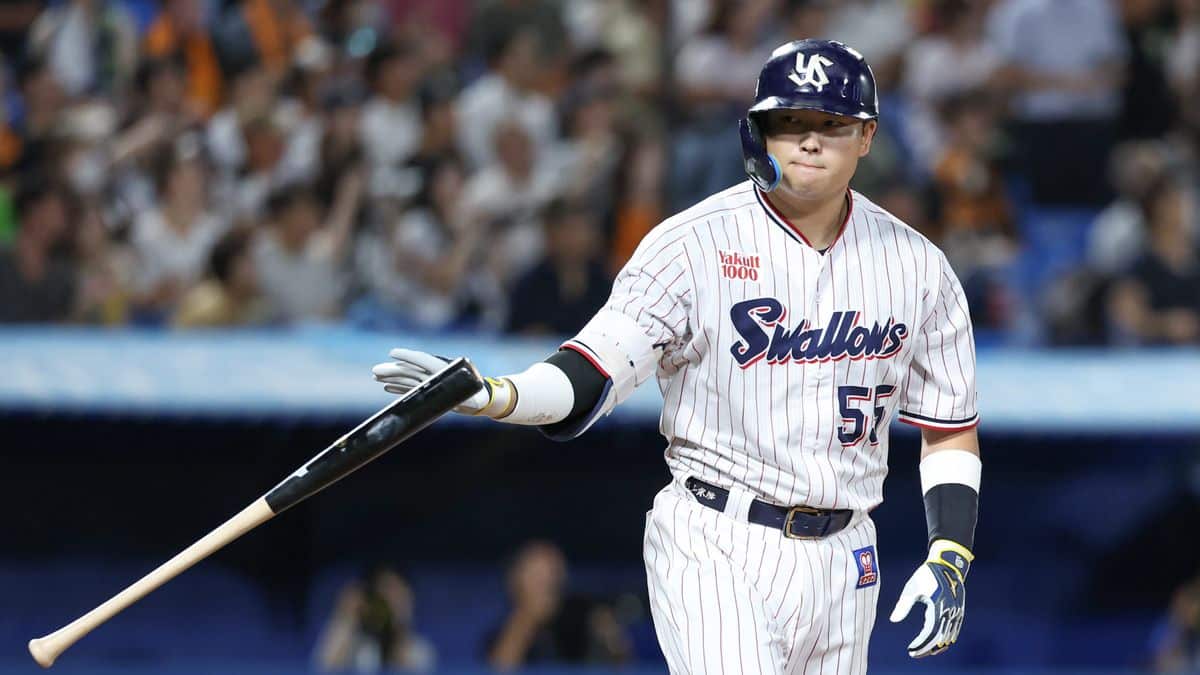
Meanwhile, Josh Naylor’s new contract all but settles the first base position for the foreseeable future. The Mariners made re-signing him a priority, signaling that they view him as a foundational piece in their lineup. Naylor’s blend of competitive fire, left-handed power, and ability to produce in big situations made him a natural centerpiece. But his presence also complicates the addition of another high-priced slugger whose long-term defensive fit is limited.
Murakami, though capable of playing third base, has long been considered someone who might eventually transition into a more permanent designated hitter role in Major League Baseball. With Naylor occupying first base and Emerson positioning himself to claim third, the only logical place for Murakami would be DH—yet even that role comes with roster-building implications Seattle seems unwilling to take on.
Seattle had previously shown curiosity about Murakami, and it’s not hard to understand why. The soon-to-be 26-year-old arrives from Japan with one of the most impressive offensive résumés in recent Nippon Professional Baseball history.
Despite missing significant time, he launched 24 home runs and drove in 52 runs across just 69 games in 2025, demonstrating the type of power that front offices covet in the modern game. His reputation, of course, extends beyond a single season: Murakami once hit an astounding 56 home runs in a year, putting him firmly on the radar of multiple MLB teams and making him one of the most anticipated international free agents of the winter.
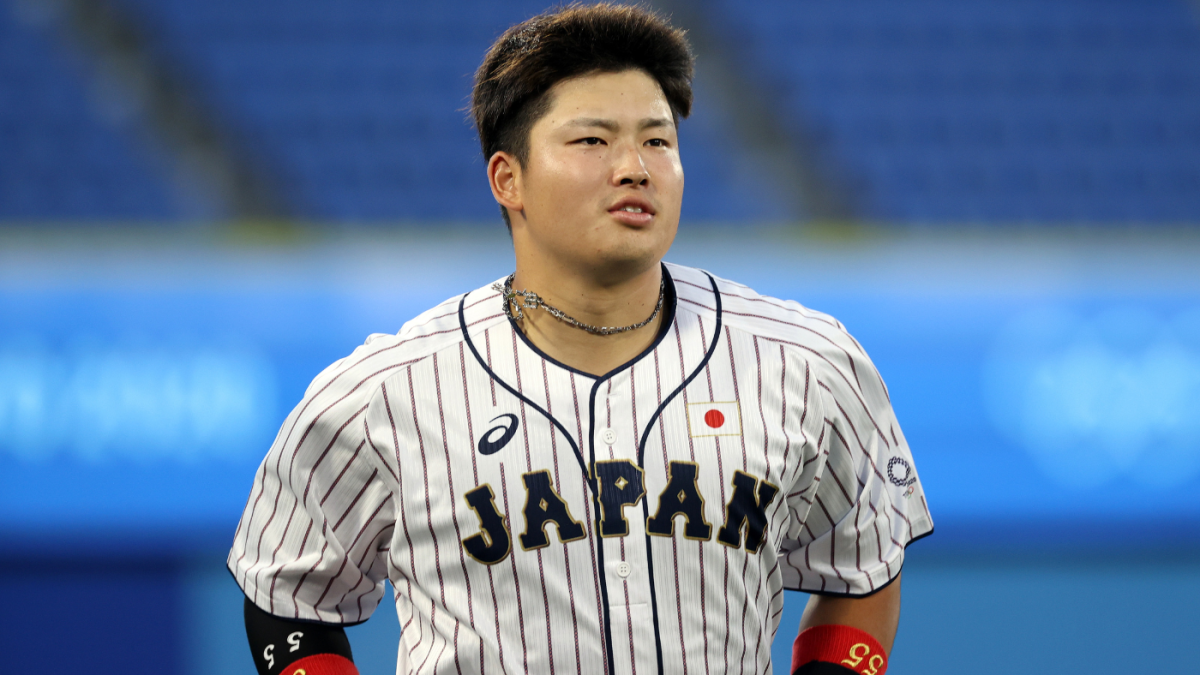
However, impressive as Murakami’s offensive profile is, the Mariners appear to have concluded that there simply isn’t an obvious or practical fit for him on their roster. The team’s forward-looking structure already has its corner infield spots effectively secured. Naylor is locked in at first base through the prime of his career, while Emerson represents the franchise’s commitment to developing and promoting homegrown talent.
Adding Murakami—even with his elite power potential—would require repositioning existing players or reducing flexibility at designated hitter, something the Mariners seem hesitant to do. Their lineup construction prizes versatility, and the front office has repeatedly expressed a desire not to clog the DH spot with a single everyday player unless absolutely necessary.
Another factor working against a Murakami-Seattle union is the financial side. While the Mariners have shown a willingness to spend when the right opportunity presents itself, their recent investment in Naylor—one of the larger free-agent hitters’ contracts handed out early this offseason—suggests that they may not be prepared to take on another major financial commitment at a similar position.
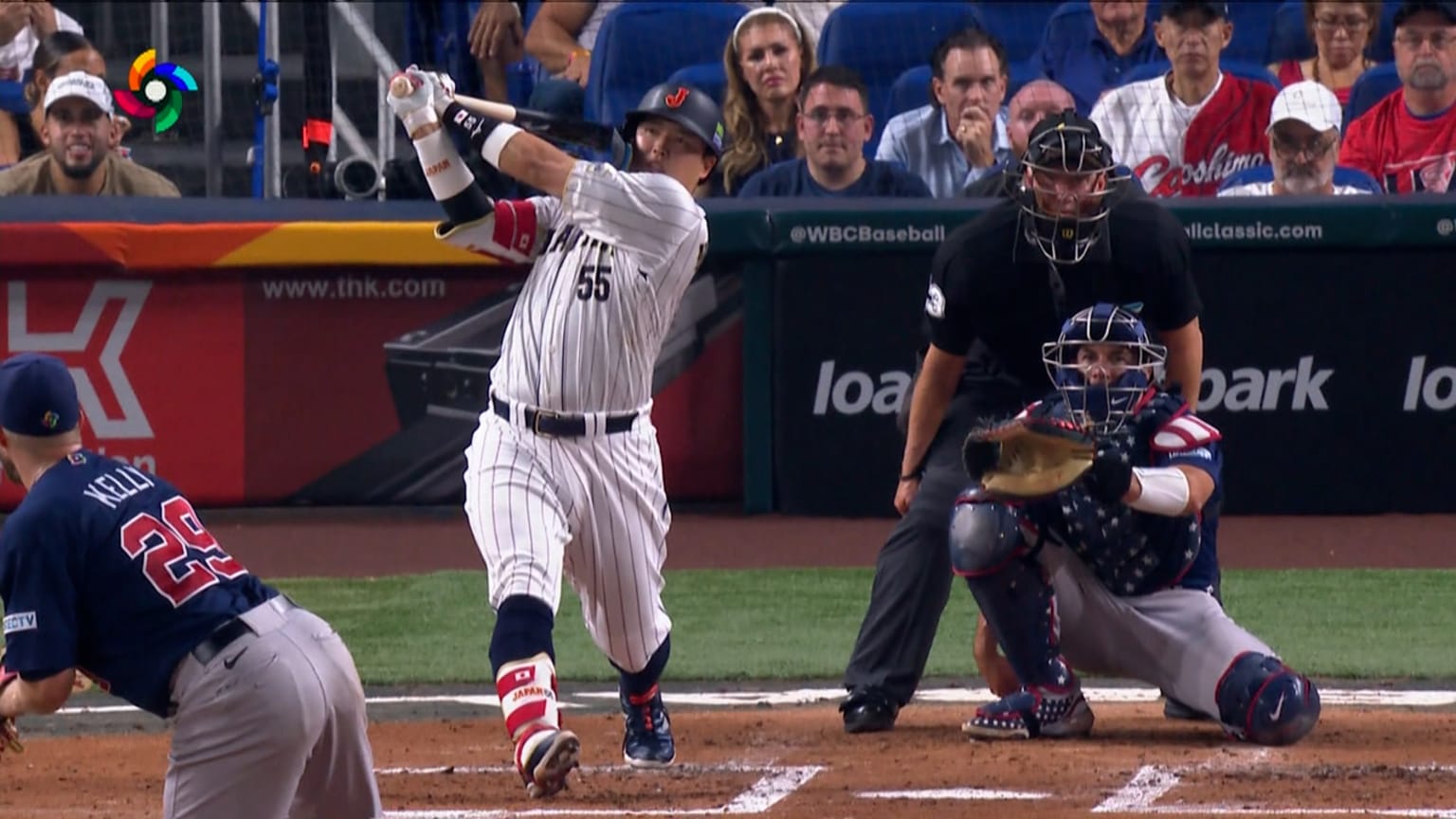
Murakami, as one of the most marketable international stars available, is expected to command a substantial deal, potentially surpassing what Seattle just committed to Naylor. Allocating that much payroll to multiple players who overlap defensively is a strategy the Mariners appear unwilling to adopt.
In the end, although the idea of Murakami joining the Mariners might have sparked excitement among fans, the team’s long-term planning makes his arrival improbable.
With Naylor already in place and Emerson viewed as a cornerstone in the making, Seattle has effectively solidified its corner infield for years to come. As a result, Murakami—despite his talent, youth, and power—does not align with the Mariners’ roster structure or developmental timeline. The organization is prioritizing continuity and internal growth, leaving little room for an additional corner infielder or primary designated hitter on the current roster.
Ultimately, Seattle’s early interest in Murakami reflects due diligence rather than a realistic pursuit. As the offseason progresses, the Mariners seem more focused on rounding out their lineup and rotation in other areas, confident that first and third base are already spoken for. While Murakami will almost certainly find a home elsewhere in MLB, the Mariners’ path is clear: they’ve chosen to invest in Naylor and trust in the rise of Emerson, closing the door on any major addition at those positions.
More MLB News:
-
Done Deal: White Sox strike again confirmed 4-player blockbuster trade
-
Done Deal: Orioles Confirmed Trade For Veteran Angels Outfielder In 2-Player Blockbuster Deal
-
Breaking: Phillies benefit from Twins’ outfield depth as reunion spark
-
Yankees Blocbuster Trade Idea Dumps Ben Rice for Braves 3-Time All-Star
-
Breaking News: Red Sox Sign 37-Year-Old Diamondbacks’ Pitcher To $13.5 Million Deal
-
Breaking: Mariners on another blockbuster reunion after essential Josh Naylor success
-
Report: Guardians Trade For Veteran Angels Outfielder In 2-Player Blockbuster Proposal
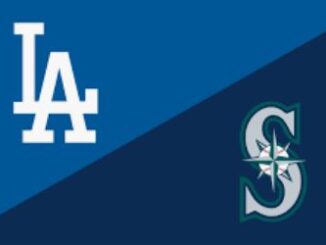
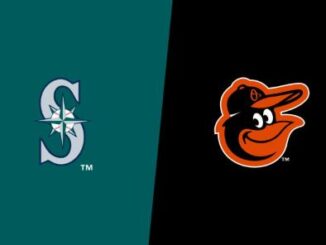
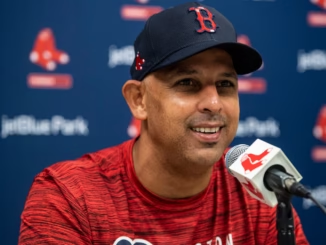
Be the first to comment